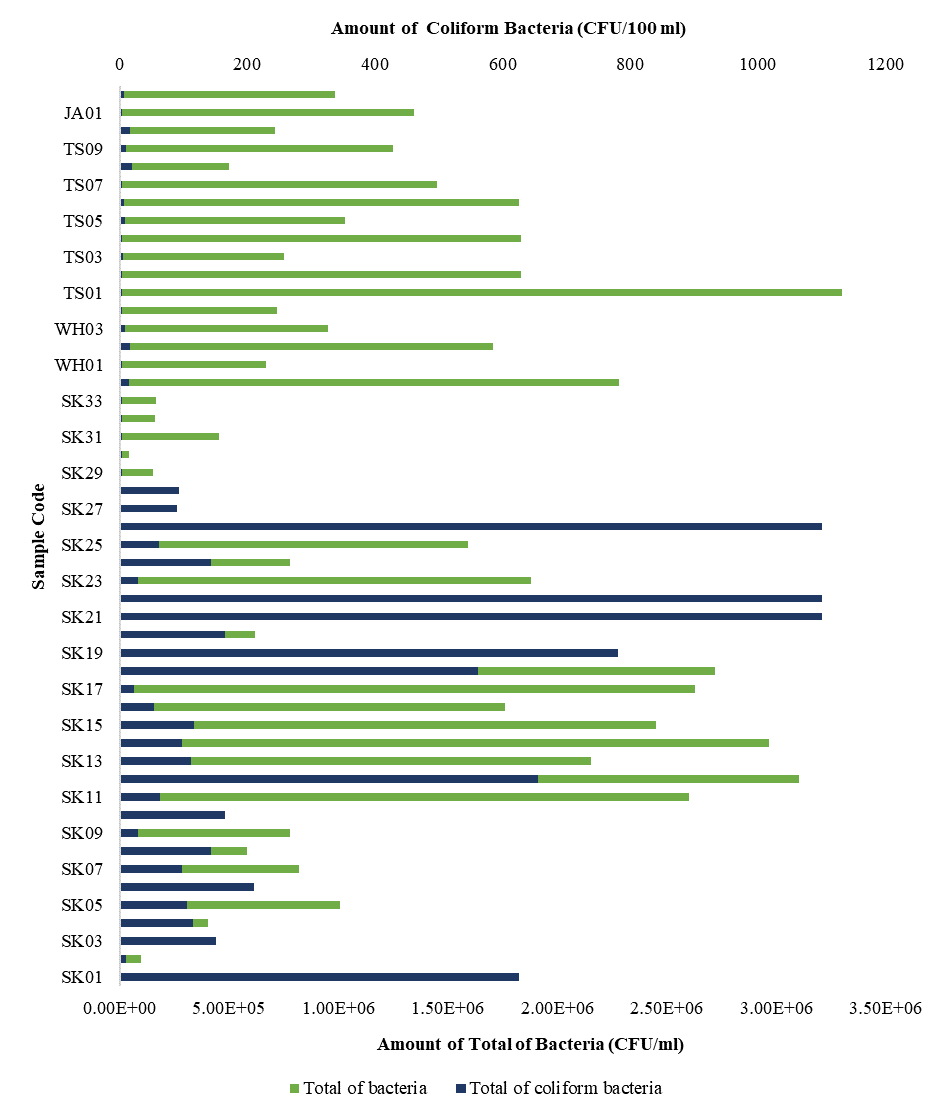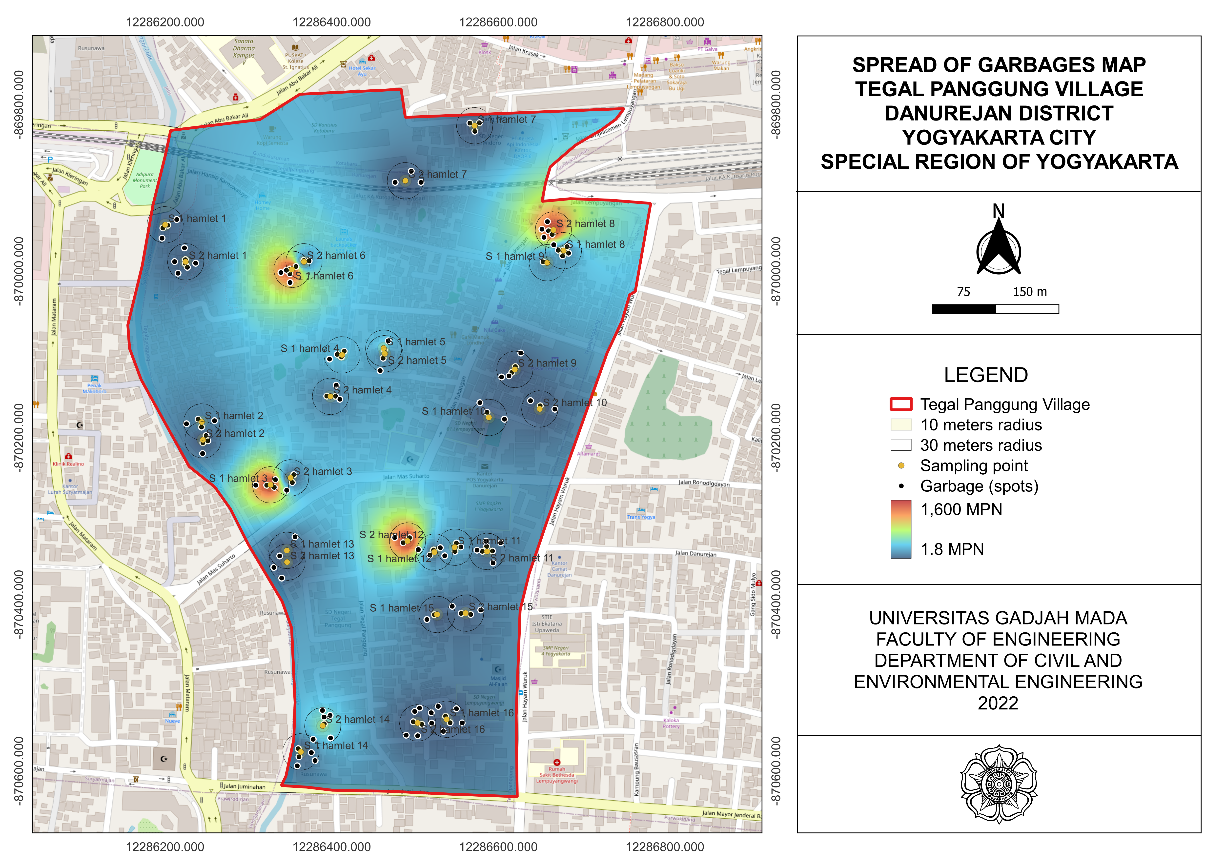Hygiene and Sanitation of Food Processing Center in Gudang 100 Warehouse at Tanjung Perak Sea Port of Surabaya 2018
Downloads
Food Processing Premise is a place for processing food raw ingredients to become ready to consume food. In order to function optimally, the premises are needed to be controlled frequently particularly in the port area where many visitors and staffs are in needs of health protection during their activities in this area. For this purpose, the authority has been attempting to increase and maintain food and baverage quality in this area therefore it could avoid any public health menaces from food contamination and intoxication for the population. As basic health survey (RISKESDAS) in 2013 reported diseases contributed as public health threats such as diarrhea 3.5%, typhoid 2.2%, hepatitis 1.2% (Riskesdas, 2013). The study aims to analyse the hygiene and sanitation implementation of food processing center in Gudang 100 warehouse at Tanjung Perak Sea Port of Surabaya. This present study is an observational study with cross sectional design. The sample was obtained based on 2017 data and mapping of 60 food tenant premises. 5 places were observed during study period. The variables observed were including of location, building, sanitation facilities, dining room, food storage, ingredients, food, the process, serving, food stuff, and the employee. The variables were observed using the total score as enacted by Indonesian Ministry of Health regulation NO.1098/MENKES/SK/VII/2003 regarding of Hygiene and sanitation standards for food stalls and restaurant. The result of the study shows there are 2 food stalls (B and C) with score <700 while the other stalls (A, D and E) reach score >700. The conclusion of this study highlights the needs of adjusting the requirement of the hygiene and sanitation of food stalls and restaurant as well as provide regular trainings for food handlers.
Chandra. (2007). Pengantar Kesehatan Lingkungan. Penerbit Buku Kedokteran EGC, Jakarta.
Kementerian Kesehatan RI. (2007). Pedoman Teknis Pengendalian Lingkungan di Pelabuhan/Bandara/Pos Lintas Batas dalam Rangka Karantina Kesehatan. Diakses dari https://peraturan.bkpm.go.id/jdih/.../KEPMENKES_425_2007.pdf.
Direktorat Jenderal Pencegahan Penyakit dan Penyehatan Lingkungan RI. (2009). Standar Operasional Prosedur Nasional Kegiatan Kantor Kesehatan Pelabuhan di Pintu Masuk Negara. Diakses dari https://kespel.kemkes.go.id/uploads/.../20160615145542.pdf.
Kementerian Kesehatan RI. (2013). Riset Kesehatan Dasar 2013. Diakses darihttp://www.depkes.go.id/resources/download/general/Hasil%20Riskesdas%202013.pdf.
Kemenkes RI, 2003. Keputusan Menteri Kesehatan Republik Indonesia Nomor 1098 Tahun 2003 tentang Persyaratan Hygiene Sanitasi Rumah Makan dan Restoran. Diakses dari https://id.scribd.com/doc/189787926/Kepmenkes-Nomor-1098-Tahun-2003.
Kurniasih, R. P, Nurjazuli., & Hanani, Y. (2015). Hubungan Higiene dan Sanitasi Makanan dengan Kontaminasi Bakteri Escherichia coli dalam Makanan di Warung Makan Sekitar Terminal Borobudur, Magelang. Jurnal Kesehatan Masyarakat (e-journal), 3(1). Diakses dari https://ejournal3.undip.ac.id/index.php/jkm/article/view/11540/0.
Pulungan, S. R, Marsaulina, I, & Naria, E. (2013). Higiene dan Sanitasi Terminal Pelabuhan Roro Kota Dumai Tahun 2012. Jurnal Lingkungan dan Kesehatan Kerja Universitas Sumatra Utara, 2(3). Diakses dari https://jurnal.usu.ac.id/index.php/lkk/article/view/3267/1593.
Rahayu, W. P., Susigandhawati, E., dkk. (2006). Penyuluhan Keamanan Pangan untuk Konsumen Swalayan. Jakarta: Direktorat SPKP, Deputi III, BPOM RI. Diakses dari https://www.researchgate.net/profile/Purwiyatno_Hariyadi2/publication/259255415.pdf.
Sembiring, D.J., Ashar T., & Hasan, W. (2013). Higiene dan Sanitasi Pengelolaan Makanan dan Kepadatan Lalat pada Warung Makan di Pasar Tradisional Pasar Horas Pemtangsiantar Tahun 2013. Jurnal Lingkungan dan Kesehatan Kerja Universitas Sumatera Utara, 3(1). Diakses darihttps://jurnal.usu.ac.id/index.php/lkk/article/view/4227.
2. Formal legal provisions to access digital articles of electronic journal are subject to the provision of the Creative Commons Attribution-ShareAlike license (CC BY-NC-SA), which means that Jurnal Kesehatan Lingkungan is rightful to keep, transfer media/format, manage in the form of databases, maintain, and publish articles.
3. Published manuscripts both printed and electronic are open access for educational, research, and library purposes. Additionally, the editorial board is not responsible for any violations of copyright law.
JKESLING by UNAIR is licensed under a Creative Commons Attribution-ShareAlike 4.0 International License.







































